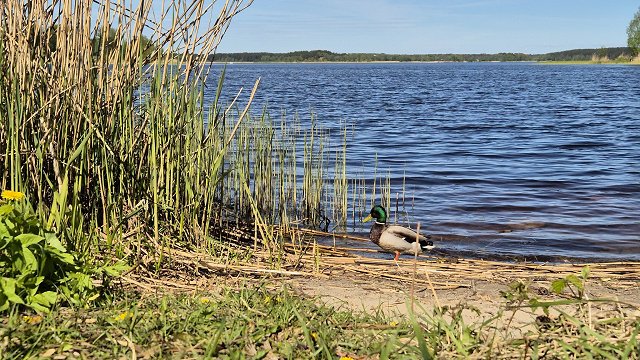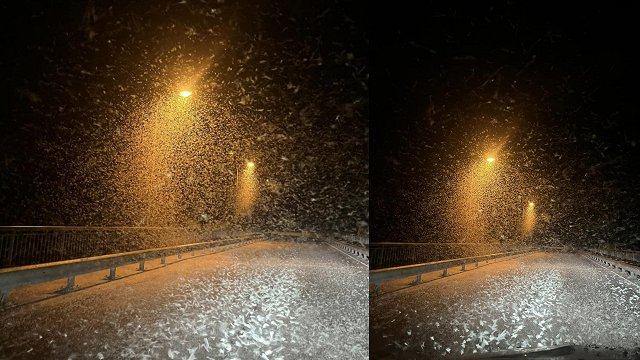In order not to increase Latvia's dependence on electricity from other countries, the possibility of developing nuclear energy should be considered, the Ministry of Climate and Energy (KEM) stated at the presentation of a report to the Saeima's Environment, Climate and Energy Subcommittee.
The report also named six places in Latvia as potential sites for a nuclear reactor, one of which is at Lake Rāzna in Latgale region, known for its unspoiled beauty. Predictably, the prospect has raised immediate opposition from locals and conservationists.
For now, there are no specific plans, but KEM is committed to continue studying the development of nuclear energy in Latvia. For the most part, the KEM report on the development of nuclear energy has caused a wave of indignation on social networks.
"I'm basically shocked by this. Everything is forbidden here – riding quad bikes, using jet-skis around Rāzna, because 'eco, eco', but suddenly a nuclear power plant is going to be built here?" Santa Viša-Gaisiņa, whose family's tourism company is located on the shore of Lake Rāzna in Rēzekne district, told Latvian Radio. She believes that the appearance of such an object would adversely affect the flow of tourists.
Commentators on social networks have also expressed their displeasure about such a potential site for a nuclear power plant, stating that the lake in the Rāzna National Park is a place of recreation. The Nature Protection Board, which manages the park, has not yet received information about KEM's plans, but stated that nuclear power plants should not be built in a protected natural area.
This was also agreed by the chairman of the Rēzekne County Council, Monvīds Švarts (United List):
"[It's an] Absolutely unsuitable place from the point of view of nature protection – it is a protected natural area. Also from the technical point of view, at least in the world, such power plants are placed where there is immediate energy supply [infrastructure]."
The map is out of date
The map with the possible locations of the nuclear power plant was created by energy company Latvenergo taking into account the proximity of power lines, road infrastructure, geology and large water bodies for cooling purposes during the generation of nuclear energy.
Besides Lake Rāzna, the map also marks Acone on the outskirts of Rīga, Pāvilosta, Pape and Oviši along the Kurzeme coastline of the Baltic Sea, as well as Burtnieki in northern Vidzeme region.
The Minister of Climate and Energy Kaspars Melnis (Greens and Farmers Union) stated that the map was made more than 10 years ago, when the geopolitical situation was different. "That's a 2010 map. That map is not new. I assume that at the time that map was modeled, the geopolitical situation was completely different. Now the situation is completely different. Therefore, that map, if it was made today, would probably be different," Melnis said.
Cooperation with Estonia?
Members of the Saeima subcommittee were critical of the ministry's plans, but the ministry took the general skepticism positively, admitting that a lot of explanatory work is still needed.
"In the timeline, we could talk about the year 2035, probably because there are more questions than answers at the moment. Let's take the citizens' opinion into account," said the minister. However, the KEM tried to underline that the technologies used in the nuclear industry today do not resemble those from the Soviet era either in terms of power or safety.
However, issues such as the potential for nuclear sites to become military targets, and the matter of disposing of highly radioactive waste in a safe manner for thousands of years to come remain fundamentals of nuclear power generation.
The possible construction of a nuclear power plant on Latvian soil is only one of the scenarios proposed by the ministry to develop the nuclear energy industry. A second option would be to form a cooperation project with Estonia, which is generally regarded as having better geological conditions for the construction of a nuclear plant. It would also solve the issue of nuclear waste storage, which worries Latvian environmental activists.
Maksis Apinis, a member of the board of the association "Zaļā brīvība" (Green Freedom), stated that the storage of nuclear waste is irresponsible towards future generations: "As an environmental organization, we are worried about the fact that this radioactive waste is generated. It is not yet clear where in the territory of Latvia it could be stored and whether it is even possible at all. It is irresponsible towards future generations to create such waste."
The construction of even a small nuclear power plant would require more than a billion euros, as well as the training and long-term employment of numerous nuclear specialists. Therefore, it is likely that the construction of a nuclear power plant, either at Lake Rāzna or elsewhere, could only realistically come to pass several decades into the future.





























